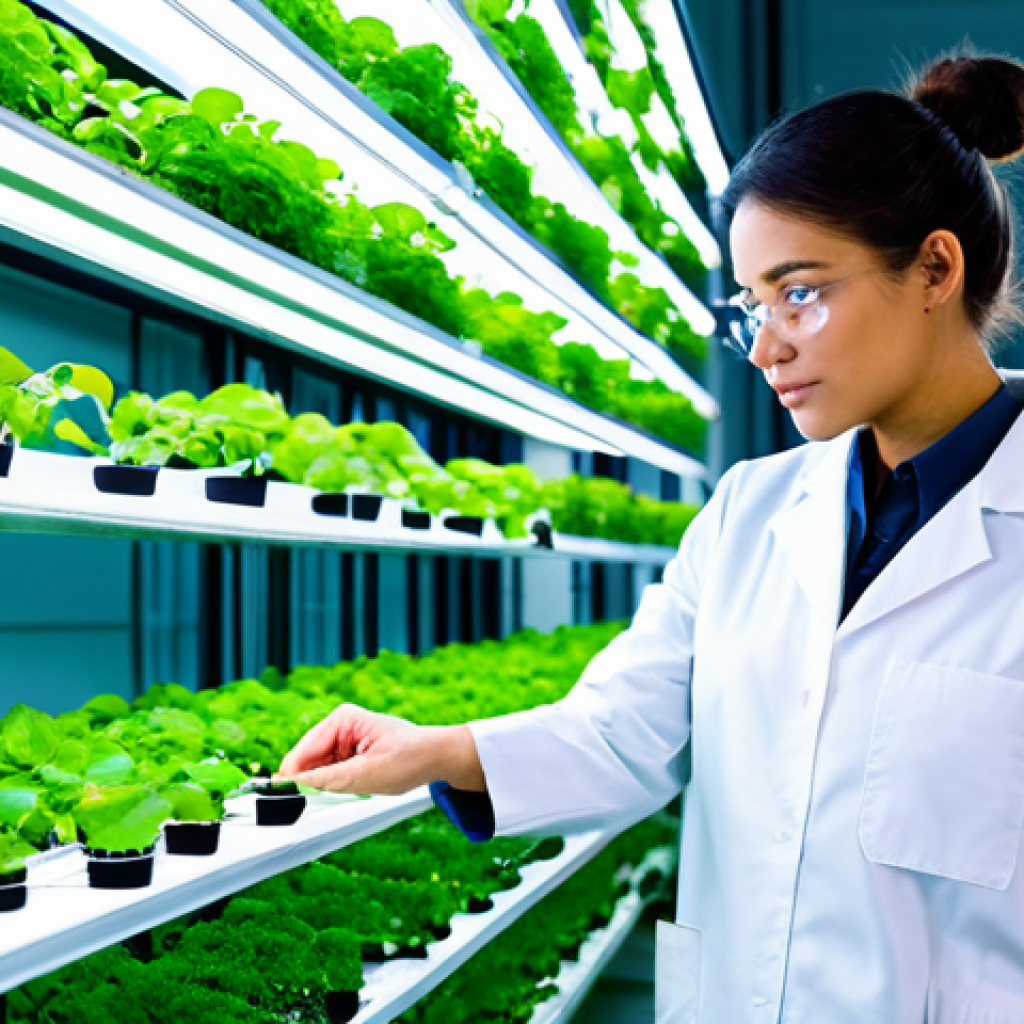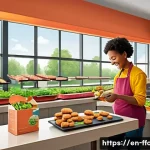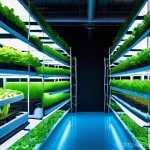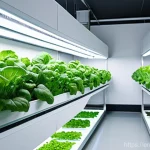We’ve all felt the pinch at the grocery store lately, haven’t we? It’s more than just inflation; it’s a stark reminder of how fragile our global food systems can be.
Ensuring everyone has access to nutritious, affordable food isn’t just a humanitarian ideal; it’s an economic and environmental imperative. I’ve personally watched how unpredictable weather patterns, driven by climate change, devastate harvests and leave communities vulnerable.
This isn’t a problem for tomorrow; it’s pressing on us today, demanding a fundamental shift in how we approach food production and distribution. From the ongoing ripple effects of global conflicts impacting grain supplies to the exciting, yet nascent, developments in vertical farming aiming to localize production, the landscape is shifting at an incredible pace.
I’ve often wondered if the solutions lie in high-tech indoor farms or a return to more localized, resilient community-supported agriculture (CSA) models, which I’ve seen empower small farmers and communities alike.
The truth, I believe, is likely a blend of both, requiring smart, forward-thinking policy. We’re seeing a push for more sustainable practices like regenerative agriculture, moving away from resource-intensive farming, and a growing recognition that food waste is a resource, not just trash.
The future of food security hinges on policies that embrace innovation while bolstering resilience against climate shocks and market volatility, ultimately ensuring our plates remain full and our planet healthy.
Let’s delve into the specifics.
The Precarious Pillars of Our Global Larder
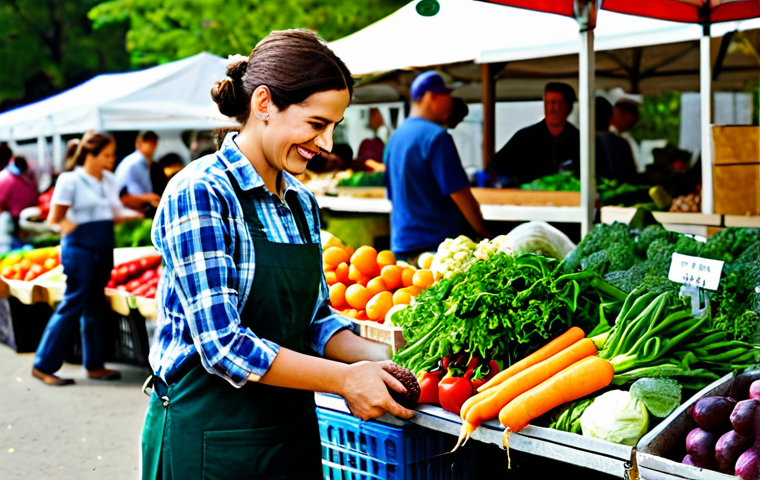
We often take for granted the intricate dance of supply and demand that keeps our grocery shelves stocked, but my experience over the last few years has truly opened my eyes to just how delicate this balance is.
From the devastating droughts that have plagued the American Midwest, personally witnessing the parched fields that once promised abundance, to the ripple effects of geopolitical tensions affecting grain exports from critical regions, every link in our global food supply chain feels increasingly stretched.
It’s not just about the price of a loaf of bread anymore; it’s about the underlying fragility of a system built on assumptions of stability that no longer hold true.
I remember visiting a small family farm in rural Iowa during a particularly bad drought, seeing the despair in the farmer’s eyes as his corn withered.
It wasn’t just a loss of income; it was a loss of legacy, a disruption to a way of life that had fed generations. This sort of firsthand experience underscores the fact that our food systems are not abstract economic models; they are deeply human, deeply vulnerable.
The sheer scale of global food transportation, relying on complex logistics and favorable geopolitical climates, means that a disruption in one part of the world can send tremors across continents.
Think about the impact of shipping container shortages or fuel price spikes – these aren’t minor inconveniences for businesses; they directly affect the cost and availability of food for everyday families.
It’s a complex web where climate, conflict, and commerce are inextricably linked, and understanding this interconnectedness is the first step toward building a more resilient future.
1. Climate Change’s Relentless Assault on Agricultural Stability
My own garden has shown me the unpredictable nature of modern weather patterns – one year, an unseasonal frost wipes out early plantings; the next, a heatwave scorches everything before it can ripen.
Multiply that by the vast scale of commercial agriculture, and you start to grasp the immense challenge. Climate change isn’t just about rising temperatures; it’s about extreme weather events becoming the new normal.
We’re seeing more intense floods, prolonged droughts, and unpredictable shifts in growing seasons that throw traditional farming calendars into disarray.
Farmers, already operating on thin margins, are forced to contend with unprecedented levels of risk, often leading to reduced yields or even complete crop failures.
I’ve spoken with agricultural scientists who are racing against time, trying to develop more resilient crop varieties that can withstand these new extremes, but adaptation takes time, and the climate isn’t waiting.
The impact is felt most acutely in regions that are already food insecure, exacerbating existing vulnerabilities and pushing millions closer to the brink of hunger.
2. Geopolitical Ripples and Trade Disruptions
When global conflicts flare up, our first thoughts often go to the immediate human toll, as they should. But what often goes unnoticed is the devastating impact these conflicts have on food supply.
Major grain-producing nations, when embroiled in conflict, can see their export capabilities plummet, causing global prices to skyrocket. I’ve watched news reports detailing how ports essential for food shipments become inaccessible, or how farmers are simply unable to plant or harvest their crops due to safety concerns.
This isn’t just about international trade agreements; it’s about millions of people who rely on those shipments for their daily sustenance. Sanctions, trade disputes, and even cyberattacks on critical infrastructure can create bottlenecks that ripple through the entire food system, turning what was once a relatively smooth flow of goods into a choked, sputtering channel.
It’s a stark reminder that food security is inherently tied to global peace and stability.
Innovating Our Way to Abundance: High-Tech Farming Solutions
For years, when I thought of farming, my mind conjured images of vast fields and tractors, a truly traditional scene. But lately, I’ve been utterly fascinated by the rapid evolution of agricultural technology, particularly in the realm of controlled-environment agriculture.
It feels like science fiction becoming reality, offering tantalizing solutions to many of the challenges our traditional farming methods face. Imagine growing fresh produce in urban warehouses, completely detached from the whims of weather or seasonal limitations.
That’s the promise of vertical farming, and what I’ve seen of its potential is truly revolutionary. It’s not without its challenges, of course, particularly the energy costs, but the rate of innovation in this space is breathtaking.
Similarly, advances in precision agriculture, where drones, sensors, and AI optimize everything from water usage to fertilizer application, are transforming how we manage large-scale farms, making them far more efficient and sustainable.
I used to think these technologies were only for big corporations, but I’ve recently heard of smaller, community-based initiatives starting to adopt some of these practices, which is incredibly exciting.
1. Vertical Farming: Reimagining the Farmscape
When I first heard about vertical farms, I admit I was skeptical. How could growing crops in stacked layers, indoors, possibly be economically viable or truly sustainable?
But after delving deeper, I’ve become a firm believer in its potential. The idea is simple yet profound: instead of sprawling horizontally, farms grow vertically, often in multi-story buildings, utilizing hydroponics or aeroponics (growing plants in water or mist instead of soil) and LED lighting.
The benefits are significant: dramatically reduced water usage (up to 95% less than traditional farming), no need for pesticides, consistent year-round yields regardless of external climate, and the ability to locate farms right in the heart of urban centers, cutting down on transportation costs and emissions.
I’ve seen some of these facilities, and the sheer volume of produce they can generate in a small footprint is astonishing. It’s a game-changer for cities, offering fresh, local food that doesn’t have to travel thousands of miles to reach your plate.
2. Precision Agriculture and AI: Farming with Finesse
Walking through a modern farm equipped with precision agriculture technology is like stepping into a futuristic laboratory. Gone are the days of blanket spraying pesticides or irrigating entire fields indiscriminately.
With GPS-guided tractors, soil sensors providing real-time data, and drones mapping crop health from above, farmers can now apply exactly what’s needed, precisely where it’s needed.
This intelligent approach minimizes waste of water, fertilizer, and pesticides, leading to healthier crops, reduced environmental impact, and often, higher yields.
I’ve read about farmers using AI algorithms to predict pest outbreaks or disease before they even become visible to the human eye, allowing for early intervention and saving entire harvests.
It’s a dramatic shift from traditional farming’s “one-size-fits-all” approach to a highly individualized, data-driven methodology that optimizes every aspect of cultivation.
It means less guesswork and more informed decisions, which ultimately benefits both the farmer’s bottom line and the health of our planet.
Nourishing Local Roots: The Strength of Community-Supported Agriculture
While high-tech solutions grab headlines, I’ve always had a special place in my heart for the resilience and community spirit embodied by local food systems, especially Community Supported Agriculture (CSA).
There’s something incredibly reassuring about knowing exactly where your food comes from, and who grew it. I remember the first time I joined a CSA; picking up my weekly box of fresh, seasonal produce directly from the farmer, feeling that tangible connection to the land and the people working it.
It’s not just a transaction; it’s an investment in local economies and a shared commitment to sustainable practices. My own experience with local farmers’ markets and CSAs has shown me firsthand how these models foster a strong sense of community, connecting consumers directly with producers, bypassing the complexities and vulnerabilities of large-scale supply chains.
This direct relationship builds trust and helps farmers secure a stable income, allowing them to focus on growing healthy food rather than worrying about volatile market prices.
1. Rebuilding Local Food Ecosystems
The beauty of local food systems, particularly CSAs, lies in their ability to foster direct relationships between consumers and farmers. This isn’t just a quaint idea; it’s a powerful mechanism for building resilience.
When you get your produce directly from a local farm, you’re not just buying food; you’re investing in your local economy, reducing transportation costs and emissions, and gaining transparency about how your food is grown.
I’ve found that being part of a CSA creates a personal stake in the success of local agriculture. When a farmer faces a challenging season, members often rally to support them, knowing that their collective contribution helps keep the farm viable.
This collaborative spirit strengthens the entire local food ecosystem, making it less susceptible to global shocks and more responsive to local needs.
It’s a return to a more localized, community-driven approach to food, which I believe is vital for long-term sustainability.
2. The Power of Direct Farmer-Consumer Relationships
One of the most profound benefits I’ve personally experienced through CSAs is the direct relationship you build with the people who grow your food. It’s a stark contrast to the anonymity of the supermarket aisle.
I’ve had conversations with farmers about their challenges, their successes, and their passion for what they do. This direct connection fosters immense trust and appreciation.
For the farmer, it provides a guaranteed income stream at the start of the season, reducing their financial risk and allowing them to plan their crops more effectively.
For the consumer, it means access to incredibly fresh, often organic, seasonal produce, and the peace of mind that comes from knowing the source. This model cuts out many layers of middlemen, ensuring that more of your money goes directly to the farmer, which is crucial for the viability of small and medium-sized farms that are the backbone of sustainable agriculture.
Waste Not, Want Not: Transforming Food Scraps into Solutions
It honestly used to shock me how much perfectly good food ended up in the trash, both in my own home and on a larger scale. It’s a sobering thought that while millions go hungry, enormous quantities of edible food are simply discarded.
But what I’ve learned is that “food waste” isn’t just about throwing out leftovers; it’s a complex issue spanning the entire supply chain, from harvest inefficiencies to consumer habits.
The good news is that there’s a growing movement to reclaim this “waste” and see it not as a problem, but as a valuable resource. I’ve personally experimented with composting in my backyard, turning kitchen scraps into rich soil for my plants, and it’s a small but tangible way to contribute.
On a larger scale, the innovation in food recovery and repurposing is truly inspiring, transforming what once seemed like an insurmountable problem into a pathway for greater food security and environmental sustainability.
1. Addressing Waste at Every Link in the Chain
The journey from farm to fork is fraught with opportunities for food to be lost or wasted. I’ve heard stories of farmers who leave perfectly good produce in the fields because it doesn’t meet the aesthetic standards of supermarkets – the so-called “ugly” produce that is perfectly edible.
Then there’s the waste during processing, transportation, and retail, not to mention the massive amount of food discarded by consumers. Tackling this requires a multi-pronged approach.
I’ve seen initiatives where surplus food from restaurants and grocery stores is collected and redistributed to food banks, feeding those in need rather than ending up in landfills.
Technologies like improved cold chain logistics and packaging can extend shelf life, while consumer education campaigns can help reduce waste in homes.
It’s a collective effort, demanding changes in everything from agricultural practices to our individual consumption habits.
2. The Circular Economy of Food: Beyond the Landfill
What if we stopped thinking of food waste as “waste” at all, and started seeing it as a valuable input for a circular economy? This concept truly excites me.
Beyond simply donating edible surplus, innovative solutions are emerging that turn inedible food scraps into new resources. Think about turning discarded food into animal feed, or processing it into biofuel.
My personal favorite is anaerobic digestion, where organic waste is broken down to produce biogas, a renewable energy source, and nutrient-rich digestate that can be used as fertilizer.
I’ve visited a facility that does this, and it was incredible to see how what was once a liability became an asset. These “waste-to-resource” technologies not only divert organic matter from landfills (where it produces potent greenhouse gases like methane) but also create new economic opportunities and reduce our reliance on synthetic fertilizers and fossil fuels.
It’s a powerful testament to human ingenuity in turning a problem into a solution.
| Strategy for Food Security | Key Benefits | Challenges & Considerations |
|---|---|---|
| Vertical Farming | Reduced land/water use, year-round production, urban proximity, no pesticides. | High energy costs, significant initial capital investment, technological expertise required. |
| Community Supported Agriculture (CSA) | Direct farmer support, fresh local produce, reduced food miles, community building. | Seasonal variability, limited selection, requires consumer commitment, may not scale for mass production. |
| Food Waste Reduction | Combats hunger, saves resources, reduces landfill emissions, economic savings. | Requires behavioral change, complex logistics for collection/redistribution, varying regulations. |
| Regenerative Agriculture | Improves soil health, increases biodiversity, carbon sequestration, reduces chemical inputs. | Slower transition, requires farmer training/support, initial yield reduction during transition. |
Shaping Tomorrow’s Plates: Forward-Thinking Food Policies
It’s clear to me that while individual actions and technological innovations are vital, they won’t be enough on their own. The scale of the food security challenge demands comprehensive, forward-thinking policies that create an enabling environment for sustainable and resilient food systems.
I’ve often thought about how government policies, for better or worse, profoundly shape what we eat, how it’s produced, and whether it reaches everyone.
From subsidies that encourage certain types of farming to regulations on food safety and trade, policy is the invisible hand guiding our food journey.
What I’ve found, through my own observations and research, is that effective policies aren’t just about preventing hunger; they’re about fostering innovation, protecting our environment, and ensuring equitable access for all.
It’s a complex balancing act, requiring collaboration across various sectors, but the stakes are simply too high to ignore.
1. Incentivizing Sustainable and Regenerative Practices
One of the most impactful policy levers, in my opinion, is the ability to incentivize farmers to adopt more sustainable and regenerative practices. For too long, agricultural policies have often favored large-scale, monoculture farming that can deplete soil health and rely heavily on chemical inputs.
But what if policies shifted to reward farmers for improving soil organic matter, conserving water, or enhancing biodiversity on their land? I’ve seen pilot programs where farmers receive financial support for transitioning to regenerative agriculture – practices like no-till farming, cover cropping, and diverse crop rotations that actually improve the land over time.
These practices aren’t just good for the environment; they make farms more resilient to climate shocks and can often reduce long-term input costs. It’s about creating a system where good stewardship is economically viable, not just an idealistic pursuit.
2. Fortifying Global Food Governance and Trade
Beyond national borders, the policies governing international food trade and global food governance are critically important. My understanding is that the current system, while efficient for a while, has shown its vulnerabilities when faced with crises.
We need policies that promote transparent and fair trade practices, reduce reliance on a few key export hubs, and establish robust emergency food reserves.
I’ve often wondered why, in a world of abundant food production, so many still go hungry. Part of the answer lies in distribution and access, which are heavily influenced by international agreements and diplomatic relations.
Policies that support local food sovereignty in developing nations, coupled with global frameworks for humanitarian aid and disaster response, are essential.
It’s about building a more equitable and stable global food system that can withstand future shocks, ensuring that food, a basic human right, is accessible to everyone, everywhere.
Building Resilience: Preparing Our Food Systems for Tomorrow’s Shocks
The unpredictable nature of our modern world – from climate change to geopolitical instability – has driven home one undeniable truth: our food systems must be built for resilience.
It’s not enough to produce food; we need to ensure that production can withstand shocks, that supply chains can adapt, and that communities have robust safety nets.
I’ve personally seen the devastating effects when systems fail, and it’s clear that a proactive, adaptive approach is no longer a luxury but a necessity.
This means diversifying our food sources, investing in infrastructure that can cope with extreme weather, and fostering innovations that enhance adaptability at every level.
The goal isn’t just to survive disruptions but to emerge stronger, more capable of feeding a growing global population in an increasingly volatile environment.
This calls for a multi-faceted strategy that embraces both cutting-edge technology and time-honored practices, all underscored by a commitment to long-term sustainability.
1. Diversifying Crops and Cultivation Methods
monoculture, while efficient for mass production, is inherently risky. If a single disease or pest targets a widely planted crop, the consequences can be catastrophic.
I’ve read about historical famines directly linked to a lack of crop diversity, and it’s a lesson we absolutely cannot afford to ignore. Building resilience means actively diversifying what we grow and how we grow it.
This includes encouraging farmers to cultivate a wider variety of heritage and climate-resilient crops, many of which are underutilized but offer robust genetic diversity.
It also means investing in a mix of cultivation methods – combining traditional field farming with controlled environments like vertical farms and greenhouses.
This creates redundancy and ensures that if one method or crop fails due to specific environmental challenges, others can pick up the slack. I believe true food security lies in this mosaic of agricultural approaches, making our food basket less susceptible to any single point of failure.
2. Investing in Adaptive Infrastructure and Early Warning Systems
When a climate disaster strikes, the immediate challenge is often not just crop loss, but also damaged roads, broken supply lines, and ruined storage facilities.
Building truly resilient food systems requires significant investment in infrastructure that can withstand these shocks. This means climate-resilient roads, decentralized cold storage facilities closer to production hubs, and robust communication networks that can operate even in emergencies.
Furthermore, I’ve come to appreciate the critical role of early warning systems. Imagine having reliable predictive models for droughts, floods, or pest outbreaks, allowing farmers and governments to prepare and adapt *before* disaster strikes.
These systems, powered by satellite imagery, AI, and ground-level data, can provide invaluable lead time, enabling measures like pre-emptive harvesting, strategic water management, or the distribution of drought-resistant seeds.
It’s about shifting from a reactive posture to a proactive stance, minimizing losses and protecting livelihoods before they are irrevocably damaged.
Concluding Thoughts
The journey towards genuinely resilient food systems is undeniably complex, demanding a blend of cutting-edge innovation, thoughtful policy, and a deeper reconnection to our food sources. What I’ve personally gathered is that there’s no single magic bullet, but rather a vibrant tapestry woven from diverse approaches – from high-tech vertical farms to deeply rooted community-supported agriculture. Every choice we make, from what we purchase to how we advocate, contributes to this vital future. I truly believe that by fostering this collective understanding and action, we can ensure a more secure and abundant table for everyone.
Useful Information
1. Did you know that roughly one-third of the food produced globally for human consumption is lost or wasted each year? This shocking statistic highlights a massive opportunity to feed more people with existing resources.
2. Food security isn’t just about having enough to eat; it’s about all people at all times having physical and economic access to sufficient, safe, and nutritious food to meet their dietary needs and food preferences for an active and healthy life.
3. Many beloved items in your pantry, like coffee and chocolate, are highly susceptible to climate change. Shifting weather patterns threaten the regions where these crops thrive, potentially leading to price increases and shortages.
4. Supporting your local farmer’s market or CSA not only gets you incredibly fresh produce but also reduces your food’s carbon footprint by cutting down on transportation and strengthens your local economy.
5. Technologies like vertical farms in urban centers and AI-driven precision agriculture are rapidly transforming food production, promising solutions for growing more food with fewer resources, regardless of traditional land and climate constraints.
Key Takeaways
The global food system is incredibly delicate, facing growing threats from climate change, geopolitical unrest, and significant waste. However, through innovation like vertical farming and precision agriculture, bolstering local food networks, aggressively reducing food waste, and implementing smart, adaptive policies, we can build a far more resilient future.
The key lies in diversification, investing in smart infrastructure, and collective action to ensure stable access to nutritious food for all.
Frequently Asked Questions (FAQ) 📖
Q: Why are we feeling such a sharp increase in grocery prices lately, and what’s driving this instability in our food supply?
A: Honestly, I swear every time I hit the grocery store these days, my jaw drops a little more. It’s not just inflation; it’s a really stark, almost unsettling, reminder of how delicate our entire global food system actually is.
I’ve personally seen and heard from farmers how one crazy, unpredictable weather event – like those super intense droughts out in the Midwest or sudden, devastating freezes in Florida that wipe out citrus groves – can just decimate a harvest.
This isn’t some abstract problem; it directly translates to higher prices for us at checkout. Then you throw in the ripple effects from global conflicts, like what we’ve seen impacting grain supplies, and suddenly, what’s happening thousands of miles away hits you right in your wallet.
It’s a gut punch when you realize how vulnerable we are, and it makes you really think about where your food comes from, doesn’t it?
Q: Given these challenges, what are the most promising avenues for ensuring future food security – is it high-tech solutions or more traditional, localized approaches?
A: That’s the million-dollar question, isn’t it? And if I’m being honest, I think the real power lies in a clever blend of both. I’ve been absolutely fascinated by the advancements in things like vertical farming; it’s genuinely mind-boggling how they can grow perfect greens indoors with minimal water, creating hyper-local food sources in urban areas.
It’s exciting, and it feels like a glimpse into a sci-fi future. But then, my heart also resonates deeply with the resilience and community spirit I’ve seen with local CSA (Community Supported Agriculture) models.
I’ve picked up my share from our local farm for years, and there’s something incredibly empowering about knowing your farmer by name, seeing exactly where your food comes from, and helping a small local business thrive.
I truly believe that the future isn’t about choosing one over the other; it’s about smart policy that strategically weaves these innovations together, using tech where it makes sense for scale and efficiency, while bolstering those local, human-scale connections that build truly resilient food communities.
Q: Beyond farming methods, what role do broader strategies like sustainable practices and tackling food waste play in this bigger picture of food security?
A: Oh, this is absolutely massive, and it’s where we, as consumers, can have a surprisingly direct impact, too. I mean, thinking about “regenerative agriculture” – it’s not just some eco-friendly buzzword.
It’s a fundamental shift in how we approach farming, moving away from just extracting resources to actively healing the soil and making it more resilient to those wild weather swings we talked about.
I’ve actually seen farms that have adopted these practices, and even in tough years, their land just looks healthier, more alive. And then there’s the whole issue of food waste – it used to just be something I tossed in the trash, but now, seeing how much perfectly good food ends up in landfills just absolutely breaks my heart.
Policies that encourage widespread composting, or that make it easier for supermarkets to donate surplus food to food banks instead of trashing it, are absolutely crucial.
These aren’t just “nice to have” ideas for environmentalists; they’re essential, practical steps to ensure more food reaches more people. It all ties back to smart, forward-thinking policies that truly value food as a resource, not just a commodity, and definitely not as trash.
📚 References
Wikipedia Encyclopedia
구글 검색 결과
구글 검색 결과
구글 검색 결과
구글 검색 결과
구글 검색 결과
